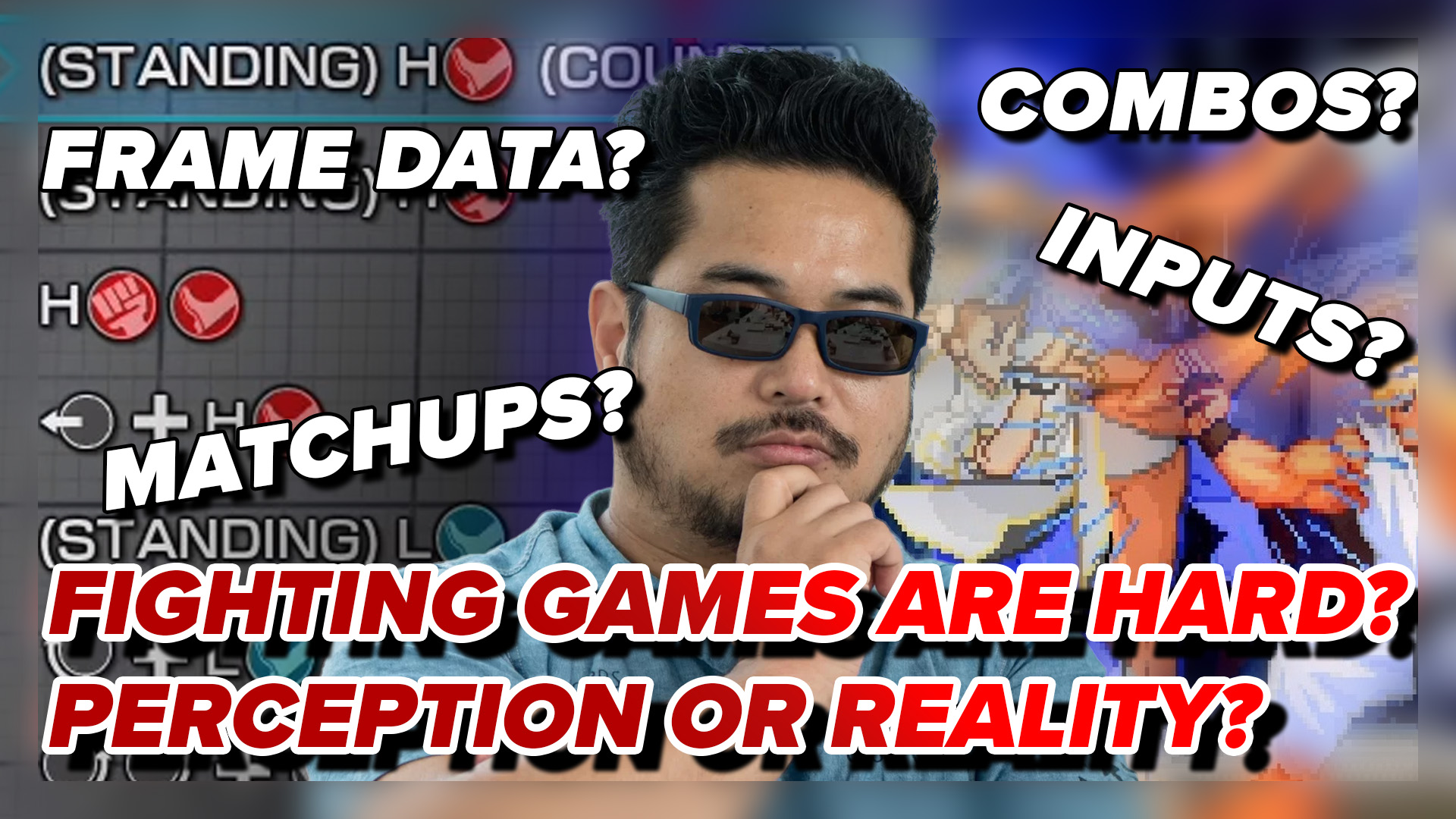Reading news about the game industry while being a gamer is like living in the world of Chicken Little: the sky is always falling. The NPD Group was the latest victim of being bonked on the head by an acorn, only to mistake it for a meteor and lose its collective shit. This hysteria came to light back on June 27th by way of a report from the group entitled ‘Gamer Segmentation 2011: The New Faces of Gamers‘, as well as a press release for the report with the subtle headline ‘Digital Gamers Closing On Core Gamers For Top Gamer Segment‘.
According to the NPD Group:
“…Core Gamers, once considered to be the leading gaming segment within the video game industry, is facing rising competition from Digital Gamers for amount of time spent gaming and number of games acquired. “
No, this cannot be! Long have core gamers sat perched atop the shining hierarchy of all video gamers, like Zeus upon our own Mount Olympus. Now our very way of life is being threatened – nay, assaulted – by those wily digital gamers!
(I smoulder with generic rage.)
At least, I think that is supposed to be my reaction. I find myself unable to muster that level of outrage though, because I’m confused. Is…is that a thing now? We’ve segmented gamers by status and established a hierarchy for them and also crowned one of those segments as ‘the top’? Please, tell me that is not an actual thing. Gamers love to have ‘better than/worse than’ debates with one another about consoles and the like, but they happen so much and so often because they’re based on opinion and there is no right answer. Or, at least, what is the right answer at any given time is so fluid that it provides room for endless speculation. Lists on the basis of things like sales are understandable, but that doesn’t seem to be the spirit of what the press release points to. What else does the report say? Let’s give it the run down and see if there’s a misunderstanding.
- Data for the report was collected from February to March of 2011 from 8,214 respondents ages 2 and up.
- The report broke gamers into categories consisting of: Core, Family/Kid, Avid PC, Light PC, Mobile, and Digital.
- Core gamers represented the largest number of gamers at 23%. The other segments followed in size with Family/Kid (22%), Avid PC (15%), and Light PC (15%). The Mobile and Digital gamers trailed behind the rest by unspecified percentages.
- The majority of gamer segments played on at least three different systems.
The Digital and Core groupings were, as the press release made clear, the focus of the remaining results.
- Core gamers clocked in at 18 hours per week with time spent gaming, and Digital gamers came in a close second with 16 hours spent per week.
- Digital gamers had purchased more games in the past three months (5.9 on average) compared to Core gamers (5.4).
- Core and Digital gamers led all segments with the highest number of digital games purchased. In both segments more than a third of the total games purchased were digital.
At first glance much of the findings seem clear cut; digital game sales have been overtaking physical sales for some time. It would follow logic that, as gamers associated with the ‘core’ or ‘hardcore’ segment shifted to digital distribution, eventually the play habits of the two divisions in question would come more in synch. The problem lies in determining just what the hell a digital gamer is supposed to be in this study, given that every potential platform for them is in some other segment. Unfortunately it is never clarified, and the ambiguity isn’t comforting coming from a study proclaiming a new direction in video gaming.
A possibility is that the report ignores game play platforms for the Digital category based on how the games were obtained, but that still makes no sense. All mobile gaming is digital, so why would it be in a separate category? Besides mobile gaming, the majority of PC games are now obtained through digital distribution methods (such as Steam), and that’s without considering where PC games played solely through a browser fall in the spectrum. There should be some common sense in how the segments were divided, but there isn’t. None of it adds up.
Mention of the prevalence of digital purchases among Core and Digital gamers doesn’t help matters. In fact, the redundancy in noting that Digital gamers purchase games digitally caused my brain to throw its hands in the air and walk away from my body. Of course more than a third of Digital gamers’ purchases would be digital. And of course they would lead with the highest number of digital games purchased; they bought more games in three months than any other category. To quote Kevin Butler, “Come on!”
The methodology used surrogate reporting (parent answering on behalf of a child) for respondents who were under age 13. This is of concern and creates issues, even when a child is old enough to provide input to a parent. For example, there will undoubtedly be differences between how much a parent thinks their child plays games, and how much time they actually spend playing. We were all kids once, we know this to be true. (Sorry mom.)
The biggest problem, though, has to do with children who aren’t old enough to articulate much to their parents. What kind of developed preferences could they have at that stage, anyway? Gaming habits start to become more guesswork than reporting so early in life. Does, “Oh my three year old loves grabbing my iPad and playing with it,” put a baby into a mobile gaming category? I hope not, because babies will play with almost anything you put in front of them – and a baby wanting to play with knives doesn’t make them Bullseye.
(Maybe it could though. Be afraid.)
There’s also the mention of multi-system play among gamers. It’s not the idea that gamers play on more than one system or platform that’s confusing – it’s expected and even mundane at this point. The confusion goes back to questioning how the categories are divided. Does the multi-system observation mean any one respondent to the report could classify as more than one segment? At best it muddles the segments used; it would be easy to see someone classified as both a family gamer and a light PC gamer, or avid PC and Core, and so on. At worst, it means the entirety of the report is skewed toward digital dominance – every segment has a digital aspect, but not every one has a physical. I don’t believe the report was purposefully skewed, but there are obvious problems with how the report was formulated.
Despite its claims, this research doesn’t paint a clear picture of the landscape. What it does do is highlight a trend: one where we’re told ‘the end is nigh’ for gaming every single week in some fashion or another, always with one sensationalist headline marching behind another. Certainly video games aren’t the only medium to ever worry about the future, nor will they be the last. The future course of books is unclear in the wake of their own digital revolution. In movies the debate rages on about whether 3D has any long term worth (other than demanding higher ticket prices).
That said, no other medium has major crises with the unerring frequency of video games – crises that never seem to amount to anything. The last crisis gaming faced down that could have put it in serious jeopardy was the Supreme Court case of Brown v. EMA; a case that gaming won. Not only was the industry saved from unjustified restriction, but the medium’s freedom of expression was preserved. Gaming had passed its biggest test yet with flying colors, and we were elated for it. It didn’t last long. Before the swell of pride had even fully passed, it was back to the same doom and gloom. Some new upstart within the industry set to ruin an established player just by existing, or whatever nonsense of the day was manufactured.
(“Let’s make this quick guys, I have to write about an iThing taking over the gaming industry.”)
As much as this could be a ‘one nation under gaming’ affirmation, it isn’t. We are almost hopelessly divided as gamers from the moment we can pick up a controller. In fact we’re programmed to be divided. Not just along brand loyalty based on companies like most consumers, but also in broader strokes based on platforms. Just hearing someone say ‘console gamer’, ‘PC gamer’, or some other category leads most gamers to rally to one over another. Want to test it yourself? Ask a friend who games on an average basis if they’re a ‘casual’ gamer, then watch the defenses fly up as they rush to categorize themselves as anything but; the broad brand loyalty of gamers is as much about what we don’t identify with as what we do. In either case, we become easy picking for the companies in their chosen arenas.
There are plenty of gamers who make informed decisions about the platforms they play on, despite the blind allegiances ingrained in gaming culture. And it would be unwise to discount other real factors that influence the play time and spending habits of gamers. Things like employment rates, the ages of gamers that prefer certain genres, gender representation in games, and so much more. Even platform preference still matters to an extent, although it falls further and further from relevance as more gamers adopt multiple platforms for more options. Factors of this nature (that the NPD Group report did point out) are what should be the focus; not the carousel of Apple vs. Nintendo vs. Microsoft vs. Sony vs. Facebook vs. Android vs….that we’ve been conned into believing is what shapes video games. If history has shown anything – and not just within gaming – it’s that competition is good for the consumer, and good for the industry in which it takes place.
Back in 2009 when Zynga exploded on Facebook, analysts shouted from the rooftops that the Mafia Wars and Farmville craze sounded the death knell of the console. Two years later and – surprise! – neither has gone anywhere. In fact, the continued success of console games, the re-invigoration of the PC, the emergence of mobile gaming (and the Angry Birds that go along with it), the ingenuity of indie games, and the audience the casual market has attracted all serve to illustrate the terrible and dirty secret companies looking for 100% market share don’t want you to know: there’s room for all of it. Isn’t that horrible? That there are in the neighborhood of 6 billion potential gamers the world over, and there’s a space for every platform and type of game all those differing interests might entail, as long as a real effort is made to cultivate those potential players.
I could think of many reasons why gaming news outlets and research groups constantly piss in every gamers’ cereal; many are the same reasons you barely see any good news in the paper. There’s nothing headline grabbing about ‘Everything is Perfectly OK With Video Gaming, Nothing to See Here‘ compared to something that makes people worry, and look despite themselves. The games industry isn’t perfect, and it is subject to the same turmoil everything else in life is. Studies on gaming are important; they just need the right focus and criteria. Gaming is evolving and growing, and research helps highlight where the evolution leads. It’s all part of the cycle; a cycle that certainly hasn’t run its course in full, and won’t for a long time.
Everything ends eventually – with or without help. But change isn’t the end of video games. Stagnation is.
(Seriously though, if the industry can come back from this, it can survive anything.)








